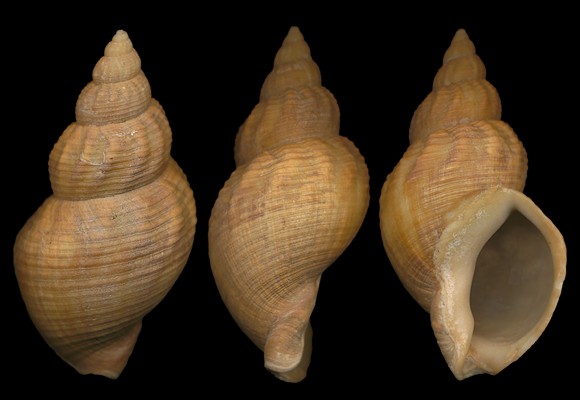
Arctic to at least New Jersey, to NW. Mediterranean. On various bottoms, even rocky but more commonly on sediments, from cold tidal pools down to circa 1200m deep. Predator on Cardiidae, Myidae but also on Polychaete worms, and occasionally scavenger, the species becomes rare below the continental shelf, as do the preys it feeds on.
Synonyms: fragile, striatum, zetlandicum…
350-500m deep, off Estepona, Málaga, Andalucia, S. Spain. 70mm.
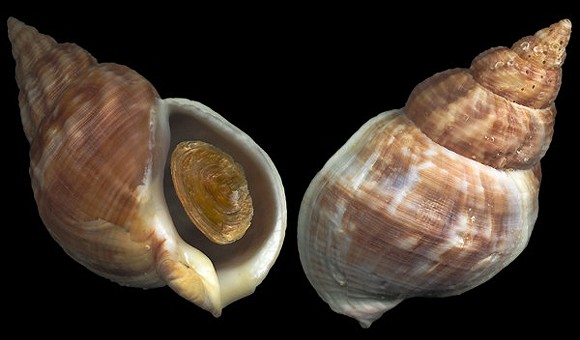
Specimen from English Channel: on coarse sand with large ripple-marks, 50cm deep under extreme low tide, Bon Secours Beach, Saint-Malo, N. Brittany, NW. France. 73mm. Extremely common in the north, where the water is cool, the species becomes very uncommon in Gibraltar area, and rare in the warm waters of western Mediterranean.
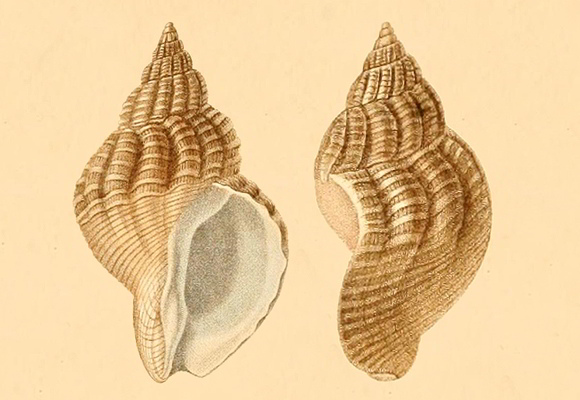
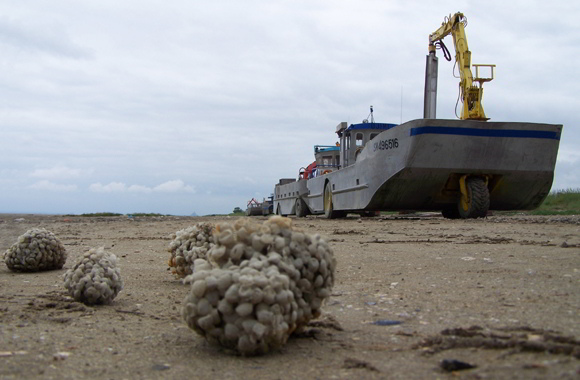
Egg-masses washed ashore near Cheirrueix, in the Mount St.-Michael’ Bay, N. Brittany. The boats parked in the background are designed for conchyliculture in sheltered shallow bays.
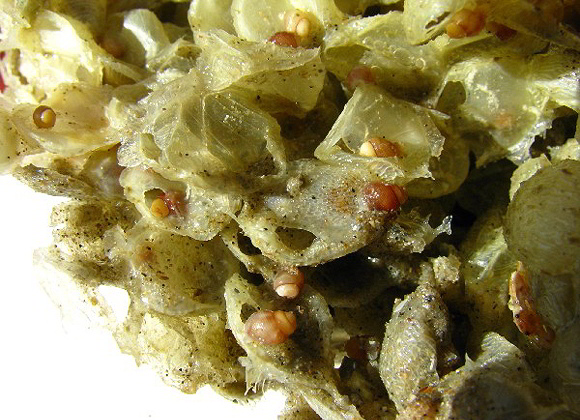
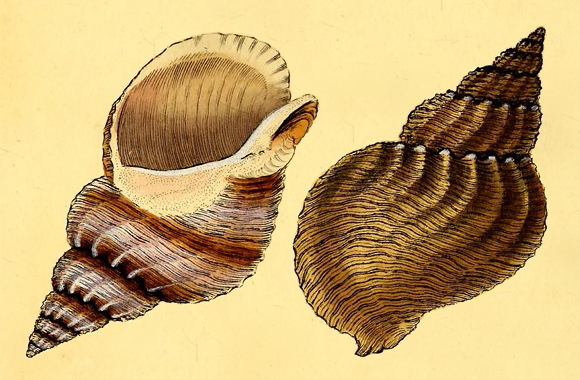
« Lister, Pennant and other authors have considered the striated variety of this Shell as a distinct species; it is certainly destitute of those prominent ribs or knobs which is so conspicuous in this Shell in general, but the transitions from the striated kind to those with knobs is so gradual and easy to be traced that we must coincide with Linnaeus and Da Costa who admit them barely as varieties. »
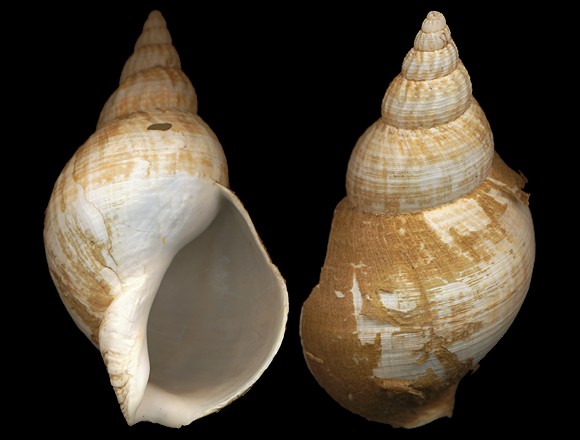
As conchyliculture develops along mediterranean coasts, more and more atlantic species find new homes, or jails: often lagunar systems in which mussels and oysters are farmed. Here is a specimen of the striated variety, from Ayrolle lagoon, Gruissan, Occitania, S. France, collected dead (possibly killed by heat) in the entrance of the lagoon. 77mm.
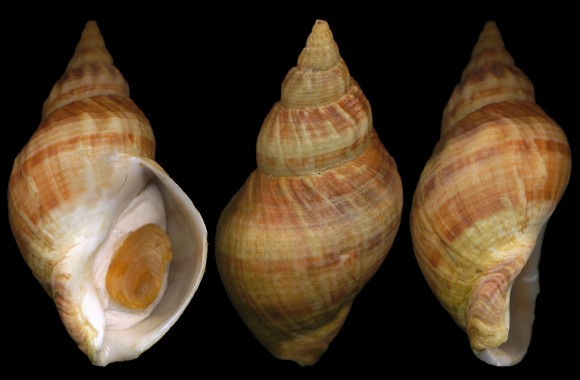
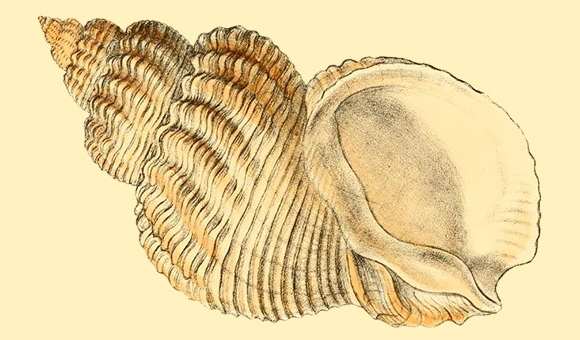
« Shell ovately conical, spire somewhat acuminated, sutures deep ; whorls rounded, transversely lineated and ridged, concentrically plicated, folds descending out of the sutures ; whitish, or pale rusty colour, most frequeutly covered with an epidermis. »
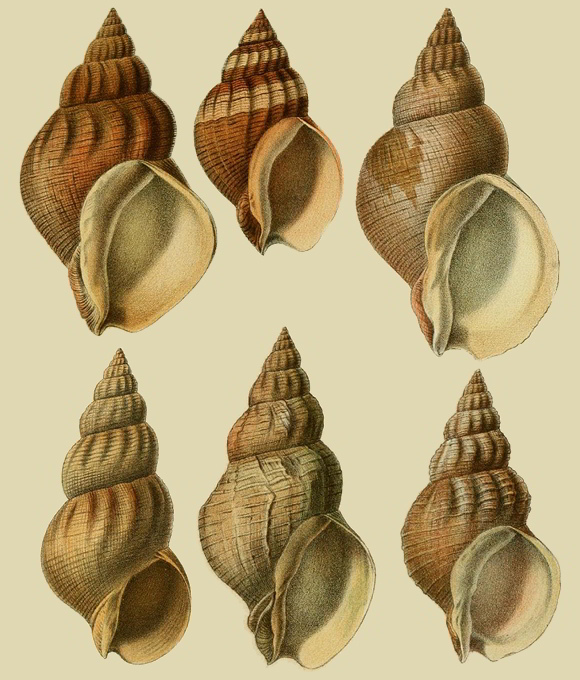
« This well known species, the common Whelk of our market, varies in growth according to the situation it inhabits ; in a rocky gravelly soil the shell is stout and strongly plicated, on mud and in a soft bottom it is thin, comparatively smooth and covered with a soft epidermis. » – L. A. Reeve: op. cit.
Buccinum undatum in W. Kobelt:
Iconographie der schalentragenden europäischen Meeresconchylien vol. I, Cassel 1887.
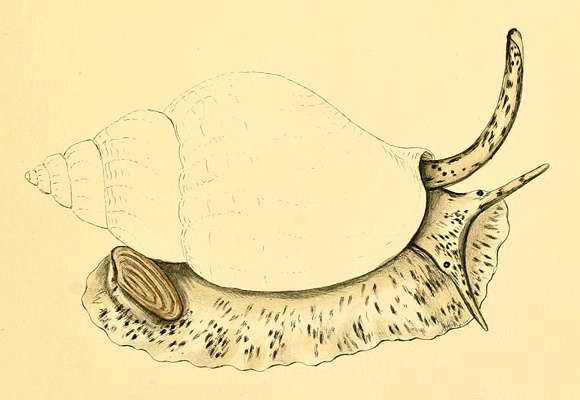
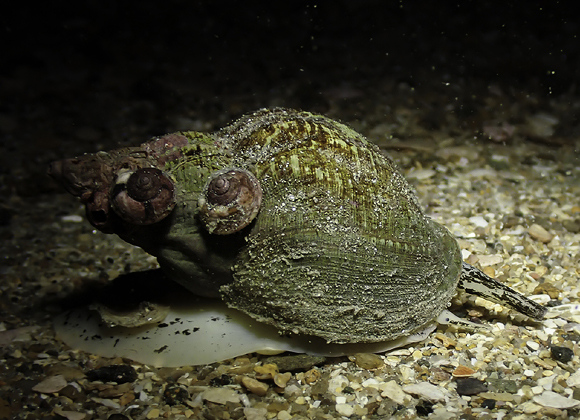
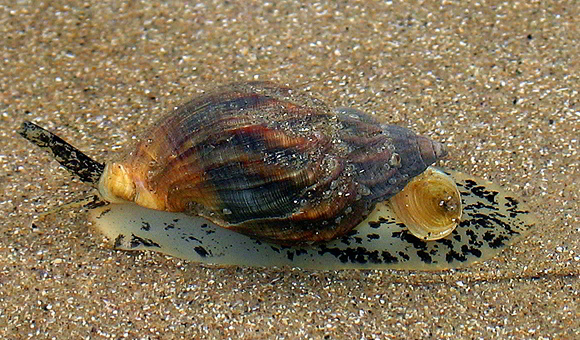
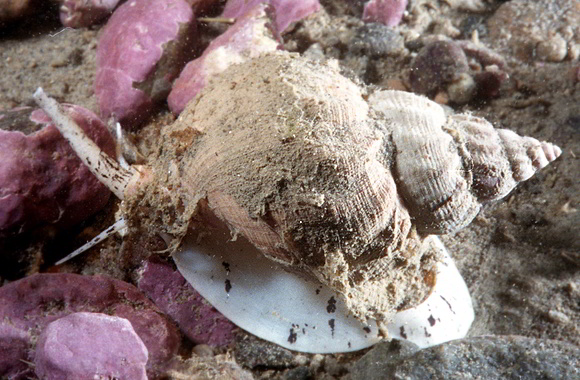
Shallow water on rocks, south of Anse-aux-Basques, Les Escoumins, La Haute-Côte-Nord, Québec. Original picture provided by G. Lafond for iNaturalist – (CC BY-NC).